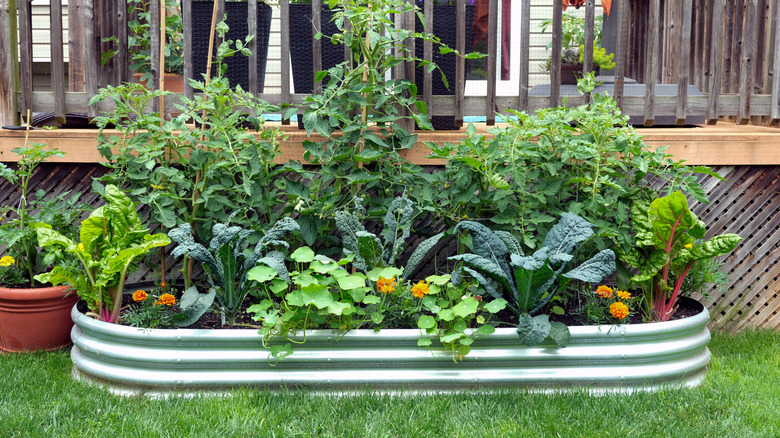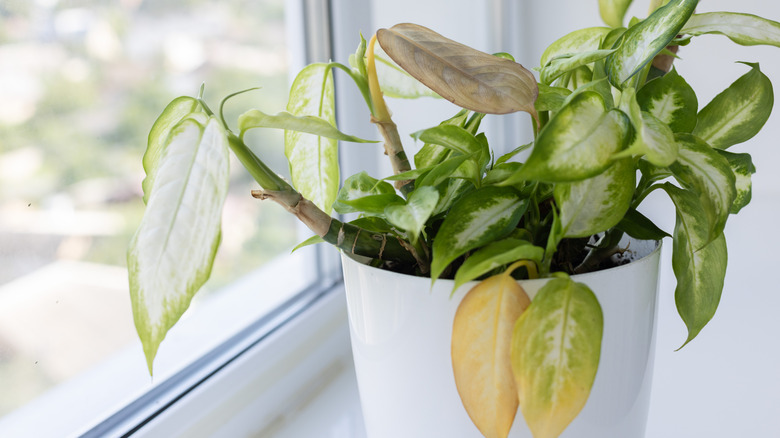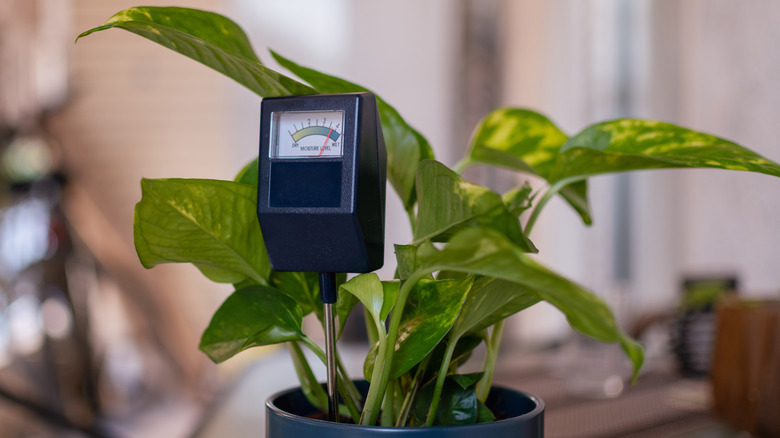The Common Container Gardening Mistake That's Wasting Your Fertilizer
Container gardening is fun, convenient, and a great way to add a splash of color to your porch or balcony. But you'll eventually start losing your plants if you make one common mistake, even if you're using the best soil and the best fertilizer on the market. The mistake we're talking about is overwatering, which can lead to issues like root rot, compaction, and, of course, fertilizer dilution. It's a problem you want to curb quickly. After all, you don't want to waste good fertilizer or kill all of your plants.
Much like not watering enough, watering too much can harm your potted greenery in different ways. Suppose you touch the soil and it feels really dry. You might feel compelled to empty a whole gallon of water in the container, but you won't be doing your plant a favor. Keep in mind that different plants have different watering needs. What's just enough for one plant may be too much for another. This is also something you should keep in mind when combining different plants in one container. Any flora you house together should have similar watering needs. Otherwise, one of them will be getting either too little or too much water.
On top of that, location matters, too. Plants you keep in shaded areas like a gazebo won't need as much irrigation as the ones that get all-day sun. It all comes down to getting to know your greenery and tailoring the amount of water accordingly.
Why overwatering is bad for your potted plants
Overwatering your plants has consequences, with the main concern being root rot. This is especially the case if your container doesn't have drainage holes (although you can easily add drainage holes to your plant pots). The water basically sits in the soil with nowhere to flow out — an open invitation for pests and diseases. As a matter of fact, harmful pathogens like pythium and rhizoctonia are big fans of damp soil. Even with gravel and rocks at the bottom of the soil, poor drainage combined with overwatering is a recipe for disaster.
You'll know your potted plants have root rot when they start to wilt, the leaves turn yellow, and growth slows down. Basically, when the soil becomes waterlogged, the roots begin to die. This is because they won't be able to absorb the oxygen they need, eventually resulting in root damage. And the issue is that many people think these symptoms are due to a lack of water, when, in fact, it's the opposite. What happens is that they add more water to the plant, making the problem even worse.
The other issue with overwatering — and the reason you may be wasting your fertilizer — is that the nutrients are washed away before your plant even gets the chance to absorb them. This can lead to nutrient deficiency, which, in turn, prevents healthy growth. Keep in mind that fertilizer works best if the roots have enough time to absorb it. So, if you're wondering why that good-quality fertilizer you bought isn't getting the job done, there's your answer. Plus, waterlogged soil sooner or later becomes compacted — another issue that hinders drainage and results in suffocated roots.
How to avoid overwatering your potted plants
Since watering needs differ from one plant to another, your best bet is to water them individually when they need it rather than watering everything on the same schedule. You'll also want to account for humidity, rainfall, and temperature levels. More humidity and rainfall, for example, mean less frequent watering. Of course, you may need to adjust your schedule from season to season to account for weather changes.
In the meantime, you can always check if your plant needs water by sticking your finger in the soil. If the soil is still a bit moist, your plant doesn't need watering just yet. If you still aren't quite sure when you should water your plant, a moisture meter can come in handy. Simply insert the meter into the soil, and it'll show the exact level of moisture. Some moisture sensors even offer smart features that notify you when your plant's moisture level is below the limit. That way, you can water your plant exactly when it needs it instead of randomly irrigating and hoping for the best.
Now, if your plants are in direct sun for several hours, you may notice that they wilt and then return to normal at night. This temporary wilting is completely natural and doesn't necessarily mean you need to water — especially if the soil is still wet from a recent watering. When it's finally time to water your plants, make sure that it reaches all the way to the roots. That way, you encourage the roots to grow deeper, which, in turn, makes your plants more drought resistant. This means you won't have to water them as frequently. In other words, deep watering is better than shallow, frequent watering.


